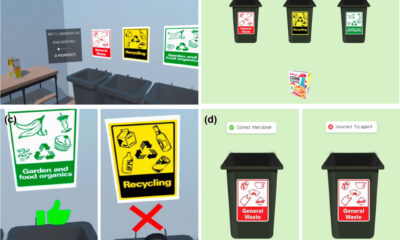Business
Half a million people are caught in a 60 percent income tax trap

More than half a million people now pay up to 60 percent income tax on the top portion of their income, a record number falling into this tax trap, according to Bowmore Financial Planning.
Salaries between £100,000 and £125,000 fall under this tax anomaly. While the official top rate of income tax is 45 percent for income above £125,140, a system error results in a marginal tax rate of 60 percent within this income bracket. For every £2 earned over £100,000, £1 of the £12,570 personal allowance is lost, disappearing completely with £125,140. Including national insurance contributions, the effective rate rises to 62 percent.
The number of higher earners falling under the 60 percent marginal rate increased by 23 percent in the year to April, from 436,000 to 537,000. Bowmore has urged the new government to tackle this ‘inequality in the income tax system’, warning it could stop individuals from earning more than £100,000.
High income earners also face additional penalties: Earning more than £100,000 results in the loss of tax-free childcare and a reduction in the 30 hours of free childcare available to three and four-year-olds, making a pay rise above this threshold potentially financially disadvantageous.
Mark Incledon of Bowmore commented: “With the high cost of living eroding the real value of salary increases, the new government must tackle the tax trap on higher incomes. It just discourages people from working harder, being more productive and ultimately generating economic growth.”
One factor contributing to the increased number of higher-rate taxpayers is the freeze on income tax thresholds. The higher rates threshold of £50,270 has remained unchanged since April 2021, and the additional rates threshold was reduced from £150,000 to £125,140 in 2023, with both thresholds set to remain in place until 2028. This freeze creates a budgetary constraint, causing rising incomes to put more pressure on people moving into higher tax brackets, effectively increasing revenues without raising tax rates.
The 40 percent higher income tax rate was paid by 3.5 percent of taxpayers, or about 1.6 million people, in the 1991-92 tax year. About 7.8 million people – 14 percent of taxpayers, including one in eight nurses and one in four teachers – are expected to pay this rate by 2028, according to the Institute for Fiscal Studies.
If the higher interest rate threshold had kept pace with inflation, it would be more than £55,000 today, according to the Resolution Foundation.
The personal savings allowance, which was introduced in 2016 by then Chancellor George Osborne, initially exempted 95 percent of savers from paying tax on their interest. However, with the average interest rate on easy access savings accounts standing at 2.79 per cent, basic rate taxpayers would exceed the limit with savings of around £35,850, and higher rate taxpayers by £17,925.
In the 2020-2021 tax year, fewer than 800,000 people paid tax on their savings interest. According to AJ Bell, this number rose to more than 2.7 million in the 2023-2024 tax year due to rising interest rates.
A Treasury spokesperson said: “We aim to keep taxes for working people as low as possible while maintaining fiscal responsibility. That is why we have promised not to increase income tax, national insurance and VAT.”













